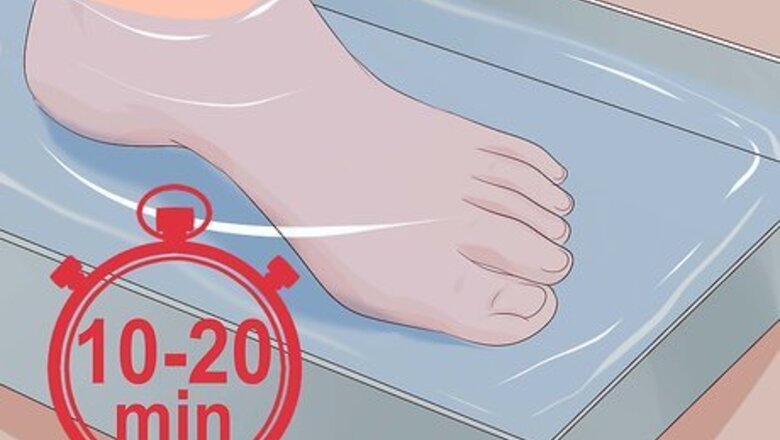
views
X
Research source
To remove infection from an ingrown toenail, soften the nail in warm water before carefully propping up the edge and applying antibacterial ointment directly to the infection beneath the nail. While this is a decent start, it is strongly advised to visit a podiatrist for proper treatment instead of relying on home treatment for the infection.
Treating the Nail

Soak your toe. In order to reduce the pain and swelling involved with an ingrown toenail, soak the foot with the ingrown toenail for 10-20 minutes in warm, soapy water, three times a day for one to two weeks. Epsom salt can also help with pain and inflammation. Fill a tub with about 0.5 US gal (1.9 L) of warm water and add 3 tbsp (75 g) of Epsom salt. Place your foot into the water, and relax for about 15 minutes while it soaks. When finished soaking, dry your toe completely. You can do this multiple times a day, or as needed while your toenail is growing out. Never soak your foot in hot water. It should always be soaked in warm water.
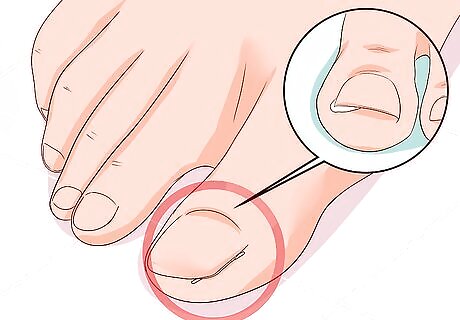
Prop up the edge of the nail. To relieve the pressure under the ingrown edge of the toenail, doctors sometimes suggest propping the nail up slightly. This is done by sticking a small piece of cotton or thick floss under the edge of the nail. This technique helps pull the nail away from the skin, so it no longer digs into the skin. If you use cotton, you can dip it in antiseptic to help ease the pain and prevent infection under the nail. If the nail is infected, this may also help to soak up any moisture that is trapped under the nail. If you use thick floss, make sure that it is unflavored and unwaxed. Do not insert a metal tool under the nail to try to insert cotton or floss. This could damage the toe further.
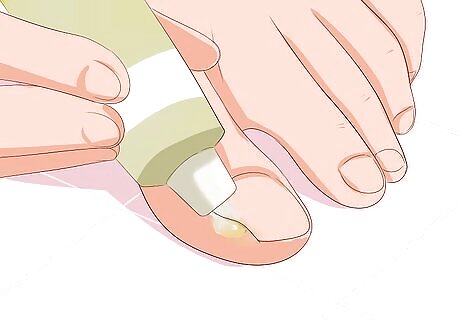
Apply antibacterial ointment. Before you apply the ointment, dry your toe completely. Cover the infected area with an antibacterial cream, applying the ointments in a thick coat over the infected area of the toe. Then, wrap your toe with a bandage such as a large band-aid—this prevents debris from entering the wound and helps keep the ointment in place. Use antibacterial ointments such as Neosporin. They’re helpful when dealing with an infected ingrown toenail
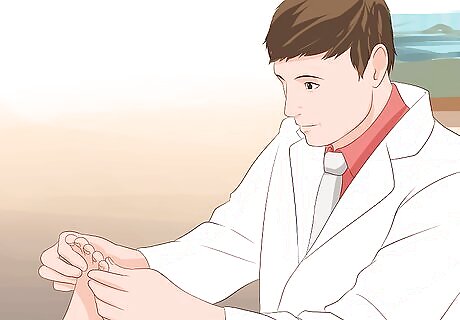
Visit a foot doctor (podiatrist). Infected ingrown toenails should not be treated at home, which is true for most infected wounds. Visit a podiatrist (more commonly known as a foot doctor) to get treatment for your infection. If the infection and nail are bad enough, minor surgery may be required. For the most part, however, a simple surgical procedure involves numbing the nail bed and then your doctor removing part of the ingrown nail with clippers or scissors. You may be prescribed oral antibiotics, which are taken by mouth, to help fend off further infections. If you are prescribed antibiotics, be sure to complete the entire course and follow up with your doctor as needed.
Avoiding Common Misconceptions
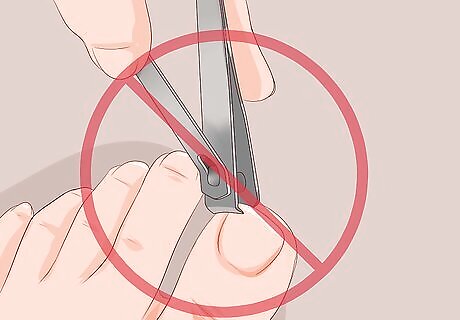
Do not cut the nail. A common misconception about having an infected ingrown toenail is that it needs to be cut—but contrary to popular belief, cutting the nail can make the infection worse. It can also cause more ingrown toenails in the future. Leave the nail uncut, and prop it up to relieve pressure. The toenail may need to be cut by a doctor, but never cut it on your own in a "bathroom surgery."
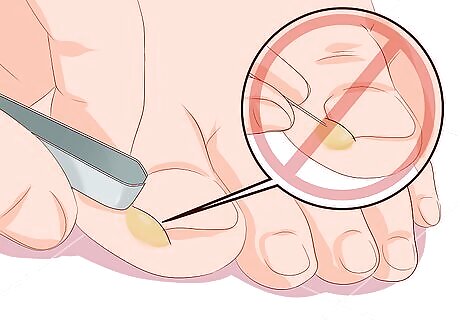
Do not dig under the nail. It may be tempting to try to relieve pressure or lift the nail from the skin by digging at the skin underneath. Do not do this, though, because it can intensify an infection and make the ingrown nail worse. Keep tweezers, orange sticks, clippers, files, or any other metal tools away from your ingrown toenail.
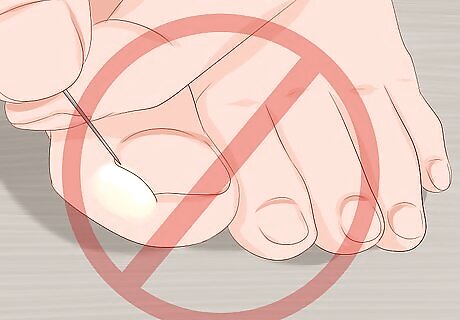
Do not attempt to drain an infection. There is a popular conception that you should use a needle to puncture a blister or a pustule caused by an infection. You should not do this because it will just make it worse. Even if you use clean tools and a sanitized needle, you can cause some serious damage by poking and prodding at a blister or an infected wound. Avoid touching it with anything other than a cotton swab or bandaging materials.
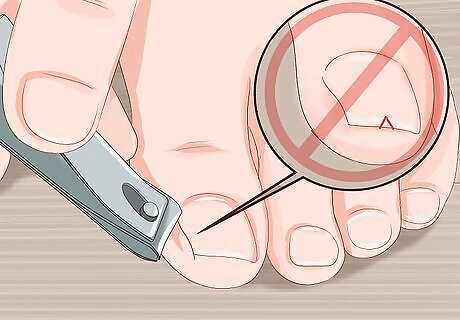
Do not cut a ‘V’ in the nail. According to some old folk healing methods, cutting a ‘V’ shape in the top of the infected toenail can help relieve the pressure, which in turn will heal the nail. However, this does absolutely nothing except create a jagged edge on your nail.
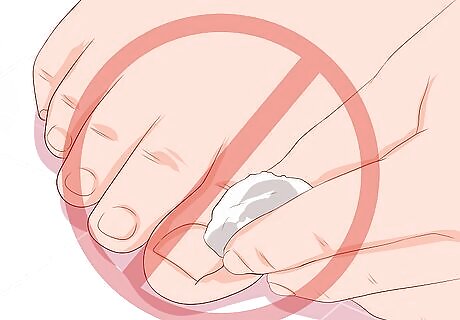
Avoid coating your toe. Do not believe urban health myths such as the idea that rubbing coal on your toe can make an infection go away. Although some people swear by this method, the coal won’t benefit the infection or the ingrown nail at all. In fact, this method may make it worse. In general, avoid putting anything on your toe or the infected area besides antibiotic cream or bandages.











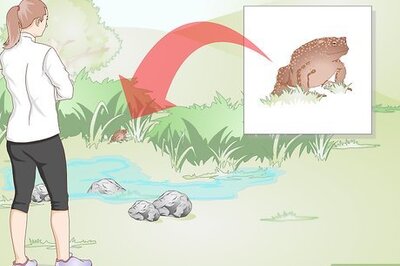


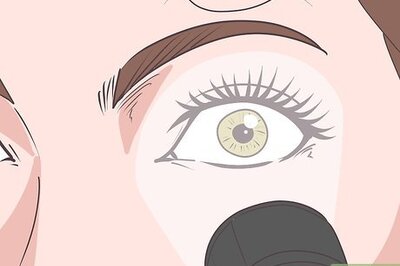

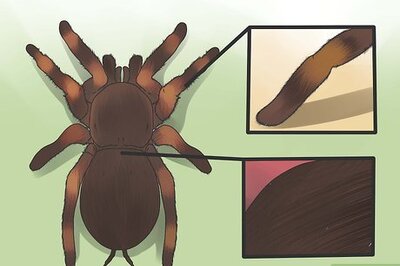



Comments
0 comment